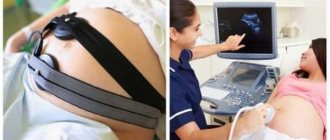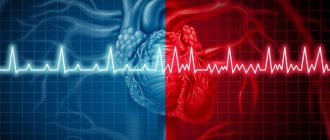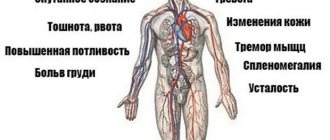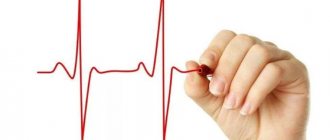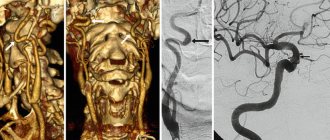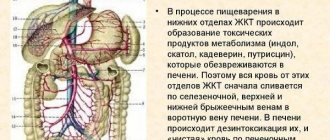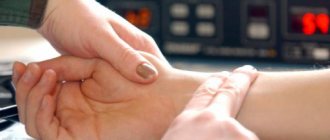What is PCI
PCI in cardiology is arterial plastic surgery that requires minimal invasive intervention. It is prescribed not only for pronounced dysfunctions, for example, a high risk of heart attack, but also to stabilize the condition in the initial stages of the disease.
Percutaneous coronary intervention is one of the most frequently performed operations related to the cardiovascular system.
Characteristic features that are advantages of PCI in comparison with alternative methods of influencing the functionality of the arteries are:
- simplicity of the operation (PCI is performed in any cardiology center or department of a city hospital, that is, the patient does not need to travel to large cities to receive medical care);
- low morbidity after the procedure (after percutaneous coronary intervention, a minimum number of patients require re-treatment or surgery);
- the possibility of performing the operation at any age.
If PCI is performed in cardiology by an inexperienced surgeon, death is possible
To avoid unexpected reactions of the body to interference in the functioning of its components, before PCI it is necessary to undergo a complete examination, including not only a study of the health of the heart and blood vessels, but also the kidneys, brain and spinal cord.
PCI: what is it?
Percutaneous coronary intervention (PCI) is a general term that involves a series of interventions aimed at widening the walls of the coronary artery. Let's take a closer look at what it is.
Improving blood flow is carried out by the following methods:
- transluminal balloon dilatation;
- stenting;
- excimer laser angioplasty.
Concept of PCI
The idea is to insert an expanding hollow implant into the artery and advance it towards the coronary artery. Thanks to the procedure, the lumen expands, more blood flows to the heart, and the heart muscle does not need oxygen as much.
The procedure is carried out by penetrating the artery. The implant is inserted into the shoulder, hip joint, and then moves to the aorta of the heart.
PCI in cardiology solves two main problems:
improves long-term prognosis, prevents the onset of myocardial infarction and death;- minimizes the frequency of angina attacks that occur due to myocardial ischemia.
Unfortunately, the procedure does not cure. It only alleviates the patient’s condition, leveling the pathophysiological effect of hemodynamically significant atherosclerotic plaques. In the future, pathological processes may continue to progress, including at the site where the balloon is installed. Over time, implant thrombosis may occur.
Indications for surgery
Percutaneous coronary intervention is usually prescribed to a patient after he contacts a cardiologist with complaints of pain in the heart or attacks of shortness of breath, accompanied by a feeling of tightness in the chest.
The main indications for medical procedures of this type are:
- Risk of myocardial infarction. If the doctor identifies the patient’s unstable condition, as well as an existing tendency to sudden cardiac arrest, in the vast majority of cases, a cardiac arrest is prescribed.
- Unstable and stable types of angina. This disease can cause circulatory problems in the cardiovascular system, causing the development of a tendency to heart attack or stroke.
- Damage to the coronary bed with adverse consequences for the general condition of the patient.
- The presence of ischemic myocardial lesions.
- Age-related changes in the circulatory system. In older people, the risk of occlusions increases due to the deterioration of the body and the presence of a large number of diseases affecting the state of the cardiovascular system.
In order for the operation to proceed as quickly as possible and without negative consequences, before PCI it is important not only to pass all the necessary tests (the list is issued by the supervising cardiologist), but also to temporarily adjust your lifestyle, including your diet and daily routine.
What our portal will tell you about: cardiology, treatment and prevention of cardiovascular diseases
As indicated on the portals on cardiology and cardiac surgery, the main means used for the treatment of pathologies of the heart and blood vessels are:
- Alpha adrenergic blockers (Prazosin, Doxazosin, Terazosin) are widely used to treat severe forms of arterial hypertension that occurs with hypertensive crises.
- Calcium channel blockers (Diltiazem, Falipamil, Amlodipine). Used to treat hypertension, relieve angina attacks, and eliminate symptoms of coronary heart disease.
- Antiplatelet agents and anticoagulants (Heparin, Clopidogrel, Tirofiban, Cardiomagnyl). Prescribed for the prevention and treatment of strokes, thrombotic complications of atherosclerosis.
- Antiarrhythmic drugs (Propranolol, Atenolol, Amiodarone, Nibentan). Prescribed to normalize heart rate in case of sinus tachycardia, bradyarrhythmias, extrasystole.
- Angiotensin receptor blockers (Losartan, Valsartan) are indicated for hypertension, heart failure, and coronary artery disease.
Measures to prevent diseases of the cardiovascular system include, first of all, changing lifestyle, nutritional principles, and increasing physical activity. In addition, the treatment of such pathologies should be combined with immunology, gastroenterology, and correction of metabolism. With the development of Russian educational websites, the cardiology portal is becoming increasingly widespread not only among specialists, but also among patients.
Contraindications
PCI in cardiology is a non-hazardous surgical intervention, which nevertheless requires a careful examination of the patient’s general health condition. Among the main contraindications to percutaneous coronary intervention, cardiologists note:
- body resistance to antiplatelet therapy;
- renal failure (its acute or chronic form);
- dysfunction of the gastrointestinal tract, including prolonged bleeding;
- febrile conditions (especially if it is impossible to determine the reasons that provoked their occurrence);
- recent stroke;
- anemia (moderate and high);
- hypertension (uncontrollable and uncontrollable by medication);
- electrolyte disturbances (not only pronounced, but also in a latent form);
- inability to maintain contact with the person being operated on, for example, due to his being in an unconscious or inadequate state;
- the presence of a serious disease that may be negatively affected by PCI;
- the patient’s refusal to receive postoperative medical support (under such circumstances it is impossible to control potentially dangerous consequences for the patient’s body);
- intoxication;
- individual intolerance to a number of medications. Including anesthetic type;
- severe heart failure.
Depending on the number and type of contraindication, the doctor makes a decision on the advisability of PCI in a particular case. Refusal from coronary plastic surgery may be temporary, since some of the above circumstances can be corrected and partially or completely eliminated.
Coronary angiography in questions and answers
Question: what is coronary angiography (CAG, coronary angiography)?
Answer:
Coronary angiography is a study of the blood vessels of the heart, allowing one to see the internal contour of the heart vessels on an x-ray. Most often, this method is used not to make a diagnosis, but to determine the tactics of surgical treatment - i.e. Doctors can determine whether surgical treatment is possible and choose the most preferable type of surgery.
#image.jpg
The medical formulation of this term can be found here
Question: how is coronary angiography performed?
Answer:
The femoral artery is punctured with a needle in the groin area, alternative access is through the radial artery. A thin wire (conductor) is inserted through the needle into the lumen of the vessel, and the needle is removed. A catheter is inserted into the lumen of the vessel along a guidewire (a catheter is a thin and flexible hollow tube). The catheter on the guidewire is visible under fluoroscopy.
Under X-ray control, the tip of the catheter is placed at the mouth of the coronary artery, after which a special contrast agent is injected. visible in X-rays. A series of x-rays are taken in different projections (at different angles), which allows you to see the internal contours of the heart, places of narrowing (stenosis) or expansion (aneurysm).
Question: is anesthesia necessary for coronary angiography?
Answer:
The examination is carried out under local anesthesia. those. the patient is conscious, only the puncture site is anesthetized. Usually, sedative (calming) drugs are additionally administered. The examination is not accompanied by pain, all other senses are preserved.
Question: what are the indications for coronary angiography?
Answer:
in answer to the first question, we have already noted that coronary angiography is most often used to determine
the possibility and tactics of surgical intervention
. Thus, the indication for coronary angiography is the decision about the need for surgical intervention in a patient with coronary heart disease. The decision about the need for surgery is made by the patient based on information received from the doctor. If the patient categorically refuses surgical intervention, then there is no point in performing coronary angiography
In some, most often emergency cases, coronary angiography can be used as a diagnostic procedure when the patient’s condition does not allow the use of other diagnostic methods, for example, when the clinical picture is similar to acute myocardial infarction, but there is no certainty in the diagnosis. In such cases, if the diagnosis is confirmed by the study, the patient is offered emergency surgery.
Question: are there any contraindications to coronary angiography?
- intolerance to contrast agent renal failure, creatinine more than 150 mmol/l circulatory failure stages 3-4 uncontrolled arterial hypertension decompensation of diabetes mellitus mental disorders exacerbation of peptic ulcer polyvalent allergy endocarditis exacerbation of severe chronic diseases
Question: what complications can develop during or after coronary angiography?
How do PCIs differ from open heart surgeries?
Percutaneous coronary intervention differs from open heart surgery not only in its greater safety, but also in its technique.
In addition, among the characteristic features we can also highlight:
- no need to place a person under general anesthesia for a long time (with age, as well as due to the presence of a number of circumstances, it can be difficult for patients to get out of “medication sleep”);
- shorter rehabilitation process (the integrity of the skin after percutaneous coronary intervention is restored within a few weeks after the operation);
- a large number of contraindications that are “temporary” (for example, feverish conditions, the patient’s refusal to be accompanied further or the inability to maintain contact with the person being operated on);
- there is no need for lengthy preparation for the operation (usually the cardiologist observing the patient recommends taking blood tests to identify pathologies, as well as undergoing an ultrasound examination of individual body systems and obtaining an opinion from specialized specialists).
The equipment used during emergency surgery is less expensive than the “working tools” of surgeons performing open heart surgery. This makes it possible to carry out medical procedures of this type in most hospitals with a cardiology department.
Risks of intervention
PCI, despite its simplicity, like any surgical intervention in cardiology, involves a number of risks.
This is not only the body’s rejection of the stent installed during the operation, but also a potentially dangerous possibility:
- damage to the vascular wall;
- the occurrence of causeless bleeding (not only external, but also internal);
- death;
- formation of stent thrombosis;
- the onset or progression of a pre-existing acute coronary syndrome;
- development of restenosis;
- soft tissue infection;
- formation of false aneurysms;
- the occurrence of hematomas (including pulsating ones);
- rupture of the coronary arteries (despite the fact that the risk of such a consequence of PCI is minimal, in such circumstances the patient’s death is inevitable).
Despite the risks, it is important to understand that the vast majority of them are due to inappropriate examination of the general condition of the body before percutaneous coronary intervention.
If you follow the cardiologist's recommendations (the doctor must be selected taking into account his experience, qualifications, and patient reviews), the risk of unforeseen situations on the operating table is minimal.
Complications
Complications after percutaneous coronary intervention are possible due to the hidden predisposition of the human body, for example, to allergic reactions or bleeding.
In addition, the occurrence of unforeseen circumstances during and after surgery can be influenced by the surgeon’s lack of professionalism, as well as the patient’s failure to comply with his recommendations before PCI.
Despite the fact that the number of complications after PCI is rapidly decreasing, according to statistics, there are still cases:
- deaths;
- provoking myocardial infarction;
- stroke;
- the occurrence of circumstances requiring immediate coronary bypass surgery;
- manifestations of ischemic attacks;
- complications of conditions in the area of arterial access made by doctors for the convenience of surgical procedures;
- the occurrence of renal failure and a number of other problems with the urinary system;
- allergic reactions of the body to radiopaque substances;
- slowing blood flow.
The listed complications are most common in older people, females, people with obesity or underweight, atherosclerosis, as well as in those who undergo repeated PCI.
Methods of percutaneous coronary interventions
PCI in cardiology is an invasive intervention, which, depending on the method of its implementation, is classified into 2 types:
| Type of percutaneous coronary intervention | Brief description of the type |
| Stenting |
Increased life expectancy is achieved by normalizing blood flow and preventing the formation of stagnation and blood clots |
| Coronary artery bypass surgery |
|
The method of percutaneous coronary intervention is determined by the doctor only after a complete examination of the patient. Due to the presence of a number of contraindications to each type of PCI, the specialist evaluates the feasibility of the operation depending on many factors (chronic diseases, patient age, intolerance to specific drugs, and so on).
Percutaneous coronary interventions
Currently, percutaneous coronary interventions (transluminal balloon dilatation, stenting, excimer laser angioplasty) play an important role in solving two main problems in the management of patients with coronary heart disease. Firstly, they can improve long-term prognosis, prevent the development of myocardial infarction and sudden cardiac death, and, secondly, they help reduce the frequency and/or intensity of angina attacks caused by myocardial ischemia.
It should be understood that interventions of this type do not eliminate the very cause of this disease, that is, they do not directly affect atherosclerosis. They only neutralize the pathophysiological effect of hemodynamically significant atherosclerotic plaques. In this case, the pathological process itself can progress further, and not only in other segments of the coronary bed, but also in the stented and ballooned sections of the coronary artery.
In addition, implantation of a foreign body, such as a stent, can give rise to iatrogenic pathology - thrombosis of the implant, which can also occur in a later period. To reduce the risk of coronary and cerebral complications, as well as the likelihood of death in patients undergoing percutaneous coronary interventions, it is necessary to pay special attention to measures of secondary prevention of coronary heart disease. In particular, in accordance with the recommendations received from the attending physician upon discharge from the hospital, they should increase their physical activity, taking into account the completeness of revascularization of the heart muscle, the presence of a previous myocardial infarction or chronic heart failure, etc.
If a patient without aggravating factors in the anamnesis after complete revascularization, literally immediately after healing of the site where the puncture was performed, has practically no restrictions in terms of physical activity, then persons with chronic heart failure or recently suffered acute coronary syndrome require special rehabilitation with a gradual expansion of the level of activity . In general, patients after percutaneous coronary intervention, like other patients with coronary heart disease, are recommended to do at least 30-60 minutes of moderate aerobic activity (brisk walking, household chores, garden work, etc.) for several days a week (preferably , of course, daily).
According to long-term clinical observations, stenting, compared to balloon dilatation, is less associated with complications such as restenosis and acute vascular occlusion. In this regard, at the present stage it is used more and more often. Although, in fact, the widespread opinion that coronary artery stenting is always preferable to banal ballooning is not based on the results of randomized studies. Evidence that stent implantation provides better angiographic and clinical results with fewer complications is available only for a fairly limited number of anatomical situations. Therefore, in each individual case, in order to achieve the best effect, when choosing a technique, you should focus on the specific situation.
(495) 506-61-01 — where is the best place to operate coronary arteries?
Magdalena Hospital
Stenting
Stenting is one of the most effective methods of relieving a patient from the risk of heart attack, stroke, and constant attacks of angina. It helps supply the myocardium with the necessary amount of oxygen through the installation of a vascular implant - a stent.
Restoration of blood flow patency occurs under x-ray control throughout the entire operation. Surgeons, constantly monitoring the patient's heart rate, inject a contrast agent through a catheter into the hip artery.
When mixed with blood, it fills the vessels, helping doctors visualize the area of work. Anesthesia is not required for stenting. Due to the simplicity and short duration of the operation, local anesthesia is sufficient, allowing doctors to maintain contact with the patient during the installation of coronary stents.
On the other hand, through the brachial artery, another catheter with a special “balloon” is inserted, expanding the previously implanted implant to the size of the vessel. Depending on the condition of the vascular system and the blockage of a particular artery, not one, but 2 or even 3 stents may be installed.
At the final stage, surgeons check the result of their work, assessing how freely blood now flows through the previously injured coronary vessel.
Recommendations after the procedure
There are some tips:
- You need to stay in the clinic for a couple of hours or up to a day. Depending on what the treating specialist or diagnostician decides.
- All manifestations must be reported to medical personnel. This is a security issue.
- It is important to drink fluids after the event. This will prevent the formation of blood clots.
- Intense physical activity is contraindicated for 2-3 days, as is overheating and hypothermia.
- You should not consume alcohol for at least the same period.
Types of stents
PCI in cardiology is a process that involves the use of advanced inventions. One of these is a stent. It is a thin metal tube formed from small cells. After being introduced into the body, the stent is inflated to the size of the vessel with a special balloon inserted through the artery.
The differences between its types are due to many factors: the material used in manufacture, the coating applied to the surface, the type of opening after installation in the vessel, and so on.
The main classification involves dividing implants into:
- Wire (1 type of wire is used in production).
- Tubular (their design is based on a cylinder-shaped tube).
- Ring (the design implies the presence of several rings fastened together).
- Mesh (outwardly they look like a mesh).
- Self-expanding (after installation in a vessel, they increase in it to the required size without the use of additional equipment).
- Expandable using a “balloon” (they acquire the required size after “inflating” with a device inserted through an artery).
The type of stent chosen by the surgeon for a particular person depends on the location of the implant, as well as the presence of contraindications for the person being operated on (for example, allergic reactions to a metal alloy).
Diagnostics
The main methods for diagnosing VSD include:
- Electrocardiogram. The study determines the degree of ventricular overload, as well as the presence and severity of pulmonary hypertension. In addition, in older patients, signs of arrhythmia and cardiac conduction disturbances may be detected.
- Phonocardiography. Using FCG, you can record high-frequency systolic murmur in the 3rd-4th intercostal space to the left of the sternum.
- Echocardiography. EchoCG allows you to identify a hole in the interventricular septum or suspect its presence based on circulatory disorders in the vessels.
- Ultrasonography. Ultrasound evaluates the work of the myocardium, its structure, condition and patency, as well as two very important indicators - pressure in the pulmonary artery and the amount of blood discharge.
- Radiography. On a chest x-ray, you can see an increase in the pulmonary pattern and pulsation of the roots of the lungs, a significant increase in the size of the heart.
- Probing of the right cavities of the heart. The study makes it possible to detect increased pressure in the pulmonary artery and ventricle, as well as increased oxygenation of venous blood.
- Pulse oximetry. The method determines the degree of oxygen saturation in the blood - low levels are a sign of serious problems with the cardiovascular system.
- Catheterization of the heart muscle. With its help, the doctor assesses the condition of the heart structures and determines the pressure in its chambers.
Anticoagulant therapy
Anticoagulant therapy is practiced by doctors for preventive purposes to prevent the occurrence of thrombosis and thromboembolism in the patient after PCI. Such measures require the patient to take medications that prevent excessive blood clotting.
The anticoagulants most commonly prescribed to people after percutaneous coronary intervention are of 2 types:
- direct action (drugs whose active components are heparin and gerudin);
- indirect action (drugs containing warfarin, phenindione, acenocoumarol, require accumulation in the patient’s body).
The choice of a specific type of therapy depends on the general postoperative condition of the patient, as well as the results of tests taken after percutaneous coronary intervention.
Treatment of pacemaker migration
If an additional examination of the cardiovascular system does not reveal any pathologies, then treatment is not required.
If you have any abnormalities, the treatment method will depend on the type of disease.
Diseases that provoke pacemaker migration and their treatment:
| Pathology | How to treat |
| Sick sinus syndrome | A pacemaker is installed. |
| Cardiac ischemia | Statins (Lovastatin, Rosuvastatin), antiplatelet agents (Aspirin), beta-blockers (Anaprilin), ACE inhibitors (Captopril) are prescribed. To relieve an attack of pain in the heart - Nitroglycerin. |
| Myocarditis | Physical activity is prohibited for 1–2 months. Antiviral (Rimantadine) or antibacterial (Ceftriaxone, Erythromycin) drugs are prescribed. |
| Heart valve defects | Prescribe symptomatic treatment of heart failure (diuretics, glycosides, beta-blockers, ACE inhibitors, antiplatelet agents, vasodilators). In severe cases, surgery is performed to plastically reconstruct the affected valve or replace it with a prosthesis. |
| VSD of hypotonic type | Nootropics are prescribed (for example, Phenibut). They recommend adjusting your lifestyle (exercise, eliminate bad habits, spend more time outdoors, rest as much as your body needs, include more vegetables, fruits, nuts, dried fruits, fish in your diet). |
Technique
Depending on the patient's medical history, the technique of percutaneous coronary intervention may vary.
| Specific case | Features of PCI technique |
| Percutaneous coronary intervention for myocardial infarction | PCI or “rescue” PCI for a heart attack is performed within 12 hours of the attack. In this case, doctors usually urgently catheterize the patient for subsequent adjustments to the affected area. If the operation is successful, the patient remains under the supervision of specialists for several weeks and is treated with medication. |
| For cardiogenic shock | Such an operation will be effective only if it is carried out no later than 18 hours from the onset of symptoms. The technique of such PCI requires the insertion of a catheter with a dilating balloon into the contralateral femoral artery. This will provide direct access to the blocked artery, the integrity of the vessels of which is impaired during cardiogenic shock |
| For acute coronary syndrome | When operating on a patient with acute coronary syndrome, it is necessary to use sirolimus-eluting stents. This is a substance that suppresses the body’s internal immunity, which can reject the implant inserted during PCI. |
| For coronary heart disease | When working with a person suffering from coronary artery disease, surgeons use drug-eluting stents. The feasibility of PCI is only when one or two vessels of the coronary artery are affected. Otherwise, PCI may not only be useless, but also cause bleeding |
| For coronary artery disease of a transplanted heart | When performing operations on a transplanted heart, it is necessary to use an increased dose of immunosuppressants to a widow or three times. The algorithm for performing PCI is identical to the traditional sequence of actions |
Despite the fact that PCI has been practiced in cardiology for more than 40 years, there are known cases of patient deaths. In the vast majority, this is due to an ill-chosen strategy for the operation or inadequate examination of the body’s condition before percutaneous intervention.
To avoid unexpected reactions of the body, the patient should familiarize himself with the upcoming medical procedures in advance, ask the attending physician clarifying questions, and also follow all the specialist’s recommendations when preparing for PCI.
Article design: Mila Friedan
The concept of PCI in cardiology - what is it?
PCI (percutaneous coronary intervention) is used in cardiology to resume blood flow through the arteries of the heart.
It can prevent myocardial infarction or reduce its spread. Prescribed on an emergency or planned basis. Absolute contraindications are bleeding and the inability to insert a catheter through the vascular network. The operation takes the form of balloon expansion of the site of narrowing and removal of the plaque, installation of a metal frame (stenting), or laser revascularization is used. The PCI method is low-traumatic, since only a puncture of the femoral artery is needed, it reduces the frequency of angina attacks and increases exercise tolerance.
The downside is the risk of re-occlusion, so it is important to take medications for life to reduce blood viscosity, adhere to a diet, moderate physical activity, and give up smoking and alcohol abuse.
PCI in cardiology - what is it?
Explanation PCI is a percutaneous coronary intervention, it is used in cardiology to restore the patency of the heart artery.
Recommended for atherosclerosis of the heart vessels - angina pectoris, myocardial infarction. It is called percutaneous because a catheter inserted through the skin penetrates the vessel.
For this purpose, the femoral artery is usually used, and the progress of the instrumentation is monitored using radiography.
There are 3 methods of PCI: balloon angioplasty, stenting and laser revascularization. In the first case, the lumen is expanded with the help of an inflating balloon, it crushes the plaque, in the second, a stent (metal frame) is additionally placed in this area, and in the third, laser beams destroy cholesterol accumulations.
We recommend reading the article about TEE of the heart. From it you will learn about the advantages and disadvantages of the method, indications for cardiac TEE, as well as how transesophageal electrophysiological examination is performed.
And here is more information about myocardial rupture.
Indications for PCI
Indications for PCI surgery include:
- myocardial infarction;
- angina pectoris with an unstable course or pre-infarction conditions (attacks become more frequent and stronger, there are rhythm disturbances, typical changes in ECG, blood enzymes, heart failure);
- stable angina with resistance to medications or contraindications for their constant use;
- unstable atherosclerotic plaque (dangerous for a heart attack), discovered during examination;
- narrowing of the lumen of the vessel after coronary artery bypass surgery or previously performed stenting.
Contraindications for carrying out
It is impossible to perform PCI only in cases of extensive bleeding (anticoagulants cannot be taken afterwards) and widespread damage to the vascular network, when it is difficult to insert the catheter into the site of narrowing. The doctor evaluates all other contraindications to angioplasty only on an individual basis, comparing the risk of the operation and its absence:
- the lumen of the artery is up to 3 mm, and the narrowing area is more than 20 mm;
- multiple changes in the coronary vessels;
- low blood clotting activity, anemia;
- damage to the vessels in the extremities (especially the femoral) through which the catheter will be inserted;
- inability to perform coronary angiography due to intolerance to contrast agents;
- arterial hypertension that cannot be controlled with medications;
- high body temperature, infection, exacerbation of inflammation;
- decompensated diabetes mellitus;
- contraindications for the use of blood thinners after surgery (other than bleeding);
- insufficiency of kidney and liver function;
- circulatory disorders in the cerebral arteries;
- mental illnesses;
- neoplasms;
- heart valve damage;
- bacterial endocarditis;
- rheumatism, myocarditis.
Techniques for performing PCI
PCI is performed in several ways, with many of the approaches being the same:
- preparation - coronary angiography, blood tests: general, biochemistry with kidney and liver tests, sugar, cholesterol, coagulation, for infections (viral hepatitis, HIV, syphilis), ECG, ultrasound of the heart and blood vessels of the extremities;
- local anesthesia in the area of the projection of the femoral artery, incision 2-3 mm;
- introduction of a conductor and contrast agent;
- identification of the narrowing area;
- approaching the catheter to the location of the plaque.
Subsequently, depending on the method of restoring blood flow, the balloon expands and crushes the cholesterol plaque, a stent is installed, or atheromatous deposits are destroyed by laser beams.
After coronary blood flow has been restored, the instruments are removed and a pressure bandage is applied to the thigh.
How is PCI with stenting performed?
If PCI is performed with stenting, then after inflation with a balloon, a metal structure – a stent – is installed into the lumen of the vessel. It first passes in a curled form, and then straightens out at the point of narrowing. Its installation prevents the walls of the arteries from collapsing, and the medicinal coating also prevents re-clogging.
PCI with a stent can be a method of treating myocardial infarction, then it is performed urgently in the first 6 hours, less often during 12. If the goal is to prevent a vascular accident, then the operation will be planned, after an in-depth examination, which helps to avoid many complications.
Coronary angiography of the heart vessels
Stenting takes about 2 hours. During PCI, there is pain or discomfort in the heart, a burning sensation in the chest. Upon completion of all manipulations, the patient is admitted to the postoperative ward for constant monitoring - monitoring of ECG, blood pressure, pulse, he is given blood and urine tests to exclude coronary circulatory disorders.
After a day for a planned operation and after 2-3 days for an emergency operation, you can be in a regular ward; if there are no complications, the patient is discharged for rehabilitation at the place of residence.
Advantages of primary percutaneous coronary intervention over conventional surgery
The advantages of percutaneous coronary intervention (compared to bypass surgery) include:
- there is no need for general anesthesia, ventilation, switching to artificial circulation, or opening the sternum;
- no long recovery required;
- the effectiveness in normalizing blood flow is comparable - pain in the heart stops or appears less frequently;
- lower risk of cerebral blood flow disorders and postoperative pneumonia.
But with PCI, it is more common for the stent to become blocked or the site of expansion to narrow again, which requires another operation. This complication occurs in every fifth patient after 6-9 months.
The disadvantages of any method of surgical improvement of coronary circulation include a symptomatic effect.
This means that in this way it is possible to remove an obstacle to the movement of blood and relieve pain in the heart, but it cannot cure atherosclerosis.
Therefore, patients require long-term drug prevention of re-clogging of the arteries, drugs that reduce blood viscosity, and lifestyle changes.
Devices used
The operation of stenting heart vessels is performed using the following equipment:
- X-ray machine;
- monitors to display the movement of instruments through vessels;
- a conductor with a catheter and an expanding balloon or laser beam emitter;
- stents – metal frames, conventional or drug-eluting, inert materials.
Watch the video about stenting heart vessels:
Types of stents
There are several types of stents:
- ordinary metal ones without coating - cheaper than others, made of steel or cobalt, nickel alloys, tantalum, widely used, and many cardiac surgeons recognize them as having exactly the same final effect as the more expensive ones;
- coated with medications – medications prevent inflammation, blood clots and tissue growth on the stent;
- inert - coated with gold, titanium or silicon carbide, do not react with blood and artery walls;
- with double coating – at the same time they prevent blockage and proliferation of the muscle layer;
- self-absorbing - after 36 months they dissolve and gradually release drugs into the blood that prevent blockage of the vessel.
Types of stents
Anticoagulant therapy
All patients without exception after PCI must take drugs to reduce blood clotting - anticoagulants (Warfarin), inhibiting platelet adhesion - antiplatelet agents (Plavix, Cardiomagnyl). They are usually prescribed for 1 month, and then the patient undergoes an examination, including an ECG with stress tests, blood tests, urine tests, examination by a gastroenterologist and other specialists if necessary.
Based on the results obtained, the dose and dosage regimen are changed. In the future, it is necessary to monitor the coagulogram monthly, and other diagnostic methods are recommended once every 3-6 months. Blood thinners should be taken at a maintenance dose for at least 1 year.
Drug therapy also includes tablets for:
- lowering cholesterol levels – Crestor, Vasilip;
- normalization of vascular tone and blood pressure - Prestarium, Diroton;
- improving metabolic processes in the heart muscle - Mildronate, Preductal.
Possible risks
The main risk after PCI is restenosis. This is called repeated blockage of a coronary vessel. It can cause renewed heart pain and even a heart attack. Categories of patients in whom the likelihood of restenosis is high have been established:
- smokers;
- suffering from alcoholism;
- women;
- with diabetes mellitus;
- violating recommendations for diet and physical activity;
- over 65 years of age;
- with excess body weight;
- have had a previous heart attack.
Complications after
After stenting surgery, the following complications are possible (in addition to restenosis):
- increase in temperature - it is considered normal to rise to 37.3 degrees in the first 2-3 days, then this is a sign of infection;
- bleeding from the femoral artery where the catheter was inserted;
- impaired renal function due to the administration of contrast - lower back pain, frequent urination;
- injury to a vessel by a catheter;
- arrhythmia, cardiac arrest, heart attack (frequency below 1%).
They usually appear in the early postoperative period while the patient is in the hospital. After discharge, dangerous symptoms that require urgent medical attention are:
- fever,
- chills,
- severe chest pain,
- burning behind the sternum,
- feeling of interruptions in rhythm,
- sudden weakness
- sweating
Results
As a result of stent installation:
- the spread of an already existing infarction is stopped or its occurrence is prevented in a pre-infarction state;
- the course of angina pectoris becomes easier - attacks occur with higher physical activity, they are shorter in time, and can be relieved with a smaller dose of medication;
- the patient’s quality of life increases, as activity increases and there is a chance to fully restore ability to work;
- the risk of death from heart attack, arrhythmia and heart failure is reduced.
Life after
After the operation, restrictions are set for the first time:
- Excessive physical activity and driving are not recommended for the first day;
- for 7-10 days, bathing, lifting weights from 3 kg, quickly climbing stairs, playing sports (measured walking is useful, but without the appearance of fatigue), sexual intercourse is prohibited;
- For 30-45 days, sunbathing, staying in a sauna, hypothermia, and sudden climate change are contraindicated.
In the first month, the body recovers; a gradual increase in physical activity is necessary. Dosed walking and therapeutic breathing exercises for 30-45 minutes a day are recommended.
Pulse and blood pressure must be monitored daily; they should not be allowed to rise above 90 beats per minute and 130/85 mm Hg. Art. Smoking and alcohol abuse are prohibited. Patients require weight loss if they are obese.
Nutrition after PCI
Diet is one of the mandatory conditions of the rehabilitation period; the following should be excluded from the diet:
- fatty meat (pork, lamb, duck), offal;
- all sausages;
- semi-finished products;
- canned food;
- smoking, pickling, marinades;
- store-bought sauces;
- margarine, sour cream and cheese products;
- heavy cream, sour cream and cottage cheese above 9% fat, butter (up to 20 g);
- nectars, sweet soda;
- cakes, pastries.
Allowed:
- first courses of vegetables and cereals (without meat and fish);
- boiled, steamed, baked vegetables;
- lean chicken and fish (cannot be fried or stewed with oil);
- vegetable salad with a dressing of herbs and lemon juice, a teaspoon of vegetable oil;
- fruits, berries;
- whole grain and bran bread, porridge, crispbread;
- freshly prepared fermented milk drinks without sugar, cottage cheese 2-5%, 1-2 tablespoons of sour cream 10% per day;
- eggs for omelettes, poached, boiled - 3 yolks per week, whites can be used every day;
- legumes – beans, lentils, peas;
- seeds and nuts, honey - 1-2 tablespoons.
Cost of the procedure
For each patient, the price of stenting will be set depending on the number and type of stents. On average, installing one is 74,000 rubles. This cost may vary depending on the need for additional examination and the category of the clinic.
We recommend reading the article about heart mapping. From it you will learn about what the ECG dispersion mapping method is, the possibilities of color mapping of the heart and interpretation of the results.
And here is more information about examining the heart using a cardiovisor.
PCI in cardiology is needed to restore the lumen of the coronary artery. The operation is low-traumatic; the catheter is inserted into the heart through the femoral artery. The recovery period lasts about a month. There is a danger of repeated blockage in six months.
Source: https://CardioBook.ru/chkv-v-kardiologii-chto-eto-takoe/
